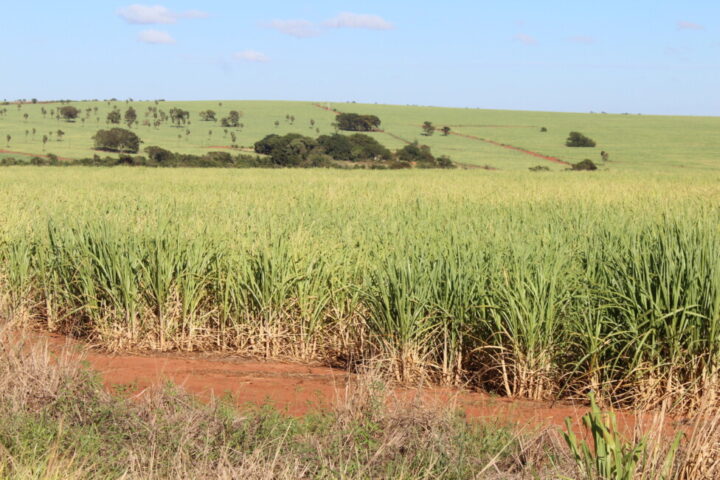Quantexa unterstützt die wachsende Anzahl von Unternehmen, die Daten, Analytik und KI nutzen, um Silos aufzubrechen
- Dank der Partnerschaft mit Microsoft ist die Decision Intelligence–Plattform von Quantexa ab sofort auf dem Microsoft Azure Marketplace verfügbar; das Unternehmen will native Lösungen für Azure entwickeln
- Die Technologievorschau zeigt den ehrgeizigen Plan von Quantexa, die Akzeptanz von Plattformen, Lösungen und generativer KI bei Geschäftsanwendern, Daten– und IT–Experten zu beschleunigen
- Die Kunden von Lighthouse nutzen den generativen KI–Assistenten Q Assist™ bereits frühzeitig
LONDON, March 14, 2024 (GLOBE NEWSWIRE) — Quantexa, ein weltweit führender Anbieter von Decision Intelligence–Lösungen für den öffentlichen und privaten Sektor, nutzte die Bühne der QuanCon24, seiner jährlichen Konferenz für Kunden und Partner, um die Roadmap seiner Decision Intelligence–Plattform vorzustellen und gab ein Update zu Q Assist, einem generativen Assistenten auf Basis künstlicher Intelligenz (KI), der im Juli letzten Jahres vorgestellt wurde. Zudem kündigte Quantexa eine Partnerschaft mit Microsoft an. Dan Higgins, Chief Product Officer von Quantexa, gab gemeinsam mit Kate Rosenshine, Global Technology Director, Strategic Partnerships bei Microsoft, die sofortige Verfügbarkeit der Decision Intelligence–Plattform von Quantexa auf dem Microsoft Azure Marketplace sowie Pläne für eine neue Cloud–native KI–Lösung für mittelgroße Banken in den Vereinigten Staaten bekannt.
Fokus auf Innovation und neue Fähigkeiten
Der ehrgeizige Plan von Quantexa, sich an die Spitze der aufstrebenden Kategorie der Decision Intelligence zu setzen, ist darauf ausgerichtet, Unternehmen und Behörden bei der Nutzung kontextbezogener Analytik und KI zur Verbesserung der unternehmensweiten Entscheidungsfindung zu unterstützen. Quantexa legt den Schwerpunkt auf die praktische, reale Anwendbarkeit von heute und hilft seinen Kunden bei der Planung zukünftiger Technologieimplementierungen. Gartner® sagt voraus, dass „bis 2027 75 % der neuen Inhalte im Bereich der Analytik für intelligente Anwendungen durch generative KI kontextualisiert werden, was eine zusammensetzbare Verbindung zwischen Erkenntnissen und Handlungen ermöglicht.“*
Als Teil der Wachstumsstrategie von Quantexa stellte das Unternehmen die Fähigkeit der Plattform vor, mit Hilfe von KI eine vertrauenswürdige Datenbasis zu erstellen und bestehende Entscheidungsprozesse effektiver zu gestalten, während sie sich gleichzeitig nahtlos in die bestehende technologische Infrastruktur der Kunden einfügt.
Dan Higgins, Chief Product Officer von Quantexa, erklärte: „Wenn es um die Technologie–Roadmap von Quantexa geht, orientieren wir uns an den Bedürfnissen unserer Kunden und ihrem Führungsanspruch im Bereich der Decision Intelligence. Dafür müssen wir unseren Kunden helfen, organisatorische Silos aufzubrechen, um eine vertrauenswürdige Datenbasis zu erstellen, die Entscheidungsfindung zu automatisieren und zu erweitern sowie die kontinuierliche Bewertung und Verbesserung von Entscheidungsprozessen zu unterstützen. Mit der Einführung neuer Funktionen und Lösungen konzentrieren wir uns weiterhin darauf, bahnbrechende Innovationen zu liefern zur Unterstützung von Unternehmen in den Bereichen Absicherung, Optimierung und Wachstum.“
Quantexa beleuchtet vier wichtige Säulen der Roadmap
- Menschliche/AI–Entscheidungen stärken: Quantexa leistet weiterhin Pionierarbeit bei der Entwicklung von Lösungen und Tools, die den Einsatz von mehreren Datenquellen und von KI zur Automatisierung der unternehmerischen Entscheidungslogik bei verschiedenen Anwendungen ermöglichen. Quantexa aktualisiert seine Plattform mit verbesserten Workflow–Funktionen, einschließlich neuer anpassbarer Scoring–, Alarmierungs– und Entscheidungsmodelle. Quantexa hat die neuen Funktionen der Plattform für das Fallmanagement und ein Update für Q Assist vorgestellt. Q Assist wird von Kunden aus den Bereichen Banken, Telekommunikation und Behörden in Pilotprogrammen eingesetzt, um Finanzkriminalität, Betrug und andere Gefahren zu bekämpfen und mit Hilfe von Customer Intelligence neue Umsatzmöglichkeiten zu identifizieren.
- Daten in großem Umfang mit KI und kontextbezogener Analytik nutzen: Quantexas Fähigkeit, Kunden beim Aufbau einer vertrauenswürdigen Datenbasis zu unterstützen und eine einheitliche Kundenperspektive zu gewinnen, ist nach wie vor einer der wichtigsten Faktoren für die Akzeptanz der Plattform. Um der steigenden Nachfrage und der einzigartigen Komplexität der Branche gerecht zu werden, präsentierte Quantexa Fortschritte im Bereich Datenmanagement, kontextbezogene Analytik und KI–Funktionen. Quantexa gab eine Vorschau auf die Fähigkeit, jenseits der News Intelligence die Aufnahme und Analyse beliebiger unstrukturierter Datenquellen durch Entity Resolution zu unterstützen und Kunden die Möglichkeit zu geben, durch die Kombination von großen Sprachmodellen (LLMs) und Wissensgraphen groß angelegte Graphenanalysen und maschinelles Graphenlernen zu ermöglichen.
- Beschleunigung der Time–to–Value durch vereinfachte Implementierungen und Paketlösungen: Quantexa kündigte neue Optionen an, um Kunden und Partnern den Einstieg in neue Implementierungsmethoden zu erleichtern, darunter die Einführung von Out–of–the–Box–Konfigurationen sowie von Low–Code– und No–Code–Tools. In diesem Jahr investiert Quantexa auch in die Beschleunigung des Ausbaus seines wachsenden Ökosystems von Partnern, zu denen PWC, EY, Dun & Bradstreet, KPMG und Moody's gehören, die auf der QuanCon24 als Partner präsent waren.
- Nahtlose Integration in die bestehenden Technologiepakete und Prozesse der Kunden: Die Decision Intelligence–Plattform von Quantexa verfügt über eine offene und erweiterbare Architektur mit skalierbaren APIs und optimierten Integrationen mit nachgelagerten Anwendungen und Systemen. Zukünftige Bemühungen werden sich auf den Aufbau eines standardisierten Frameworks und sofort einsatzbereiter Konnektoren konzentrieren.
Quantexa führt seine Decision Intelligence–Plattform und Lösungen im Rahmen einer Partnerschaft mit Microsoft auf Azure ein
Ein Höhepunkt der Roadmap Session von Quantexa auf der heutigen Veranstaltung war die Ankündigung der neuen Partnerschaft von Quantexa mit Microsoft. Zu den Highlights gehörten:
- Die sofortige Verfügbarkeit der Decision Intelligence–Plattform von Quantexa auf dem Azure Marketplace: Die Decision Intelligence–Plattform von Quantexa ist jetzt weltweit auf dem Azure Marketplace für Kunden aus den Bereichen Finanzdienstleistungen, öffentlicher Sektor, Versicherungen, Telekommunikation, Medien und Technologie verfügbar.
- KI–Innovationen helfen mittelgroßen Banken, dem Druck der Regulierungsbehörden und des Marktes standzuhalten: Außerdem hat Quantexa detaillierte Pläne für den Aufbau einer neuen nativen SaaS–Lösung auf Azure vorgestellt, die es Kunden ermöglicht, eine End–to–End–Lösung für die Überwachung von Transaktionen, Ermittlungen und Fallmanagement zur Bekämpfung von Geldwäsche (AML) zu implementieren, wobei die von den weltgrößten Banken genutzten Best–in–Class–Funktionen in ein maßgeschneidertes Angebot umgewandelt werden, das den Anforderungen von Finanzdienstleistungsinstituten mit einem Vermögen von bis zu 200 Mrd. US–Dollar entspricht. Die Lösung bietet Banken in den Vereinigten Staaten wichtige Funktionen für die Überwachung, Aufdeckung und Untersuchung von Finanzkriminalität und anderen Risiken. Das geplante Angebot unterstützt Kunden bei der Implementierung von Technologien der nächsten Generation, die es ihnen ermöglichen, mit dem rasanten Innovationstempo Schritt zu halten und die zunehmend anspruchsvolleren Compliance–Vorschriften einzuhalten. Quantexa arbeitet mit Microsoft an der Bereitstellung einer ersten Reihe von Funktionen bis Ende 2024.
Dan Higgins, Chief Product Officer, Quantexa, sagte: „Im Laufe der letzten 12 Monate hat sich Decision Intelligence zu einem schnell wachsenden Trend entwickelt, wie verschiedene Branchenanalysten festgestellt haben. Decision Intelligence war jedoch bereits seit unserer Gründung eines unserer Kernthemen. Und da wir bei Quantexa bestrebt sind, unser Technologieangebot zu erneuern und weiterzuentwickeln, um Unternehmen und Behörden dabei zu helfen, kontextbezogene Analytik und KI zur Verbesserung der Entscheidungsfindung zu nutzen, freue ich mich, dass unsere jüngste Technologie–Roadmap genau dies zum Ausdruck bringt. Unsere neue Partnerschaft mit Microsoft ist ein Beweis für unsere Absicht, unseren Kunden zugängliche Lösungen zu bieten. Wir werden uns weiterhin bemühen, noch mehr zu bieten und unsere Kunden dort abzuholen, wo sie uns brauchen.“
Tyler Pichach, Director of Financial Services Strategy bei Microsoft, sagte: „Finanzdienstleistungsunternehmen sind intelligenter und effizienter im Umgang mit der sich verändernden Marktdynamik geworden. Dadurch entsteht die Notwendigkeit, vertrauenswürdige Daten und KI zur Verbesserung und Automatisierung der Tausenden von operativen Entscheidungen zu nutzen, die sie täglich bei der Verwaltung ihrer Daten, der Bekämpfung von Finanzkriminalität oder der Identifizierung neuer Umsatzmöglichkeiten treffen. Wir sind entschlossen, mit Partnern wie Quantexa zusammenzuarbeiten, um die Decision Intelligence–Plattform auf dem Microsoft Azure Marketplace verfügbar zu machen, neue Cloud–native Lösungen für erweiterte Marktsegmente anzubieten und gemeinsame Innovationen voranzutreiben, um unsere Kunden in verschiedenen Branchen bei der Bewältigung einiger ihrer größten Herausforderungen zu unterstützen.“
Um mehr darüber zu erfahren, wie Ihr Unternehmen Decision Intelligence einsetzen kann, oder um Forresters Total Economic Impact™–Bericht über die Decision Intelligence–Plattform von Quantexa zu lesen, besuchen Sie bitte folgende Website. Um sich die Sessions der QuanCon24 auf Abruf anzusehen, besuchen Sie bitte die QuanCon–Website.
*Gartner, Prognosen für 2024: Wie künstliche Intelligenz die Nutzer von Analytik beeinflussen wird, von Edgar Macari, Peter Krensky, Afraz Jaffri, David Pidsley, Aura Popa, Mike Fang, Rita Sallam, Julian Sun, Radu Miclaus, 4. Januar 2024.
GARTNER ist eine eingetragene Marke und Dienstleistungsmarke von Gartner, Inc. und/oder ihren Tochtergesellschaften. Sie wird in den USA und weltweit genutzt und hier mit Genehmigung verwendet. Alle Rechte vorbehalten.
Über Quantexa
Quantexa ist ein globales Unternehmen für Daten– und Analysesoftware, das Pionierarbeit im Bereich Decision Intelligence leistet und Unternehmen in die Lage versetzt, vertrauenswürdige betriebliche Entscheidungen zu treffen, indem es Daten Bedeutung verleiht. Mit den neuesten Fortschritten in den Bereichen Big Data und KI deckt die Decision Intelligence–Plattform von Quantexa verborgene Risiken und neue Chancen auf, indem sie eine kontextbezogene, vernetzte Sicht auf interne und externe Daten an einem einzigen Ort bietet. Sie löst die größten Herausforderungen in den Bereichen Datenmanagement, Know Your Customer (KYC), Customer Intelligence, Finanzkriminalität, Risikomanagement, Betrug und Sicherheit während des gesamten Kundenlebenszyklus.
Die Quantexa Decision Intelligence–Plattform verbessert die operative Leistung mit einer über 90 % größeren Genauigkeit und einer 60–mal schnelleren Auflösung des Analysemodells als herkömmliche Verfahren. Quantexa wurde 2016 gegründet und hat heute mehr als 700 Mitarbeiter und Tausende von Nutzern, die mit Milliarden von Transaktionen und Datenpunkten auf der ganzen Welt arbeiten. Das Unternehmen hat Niederlassungen in London, Dublin, Brüssel, Malaga, den Vereinigten Arabischen Emiraten, New York, Boston, Toronto, Sydney, Melbourne und Tokio.
Medienanfragen
Kontakt: Stephanie Crisp, Associate Director and Media Strategist, Fight or Flight
E–Mail: Quantexa@fightflight.co.uk
Kontakt: Adam Jaffe, SVP of Corporate Marketing
Telefon: +1 609 502 6889
E–Mail: adamjaffe@quantexa.com
Ein Foto zu dieser Ankündigung ist verfügbar unter http://www.globenewswire.com/NewsRoom/AttachmentNg/36fa5c1e–cba8–4a4c–9272–191148c797aa

GLOBENEWSWIRE (Distribution ID 1000929084)






